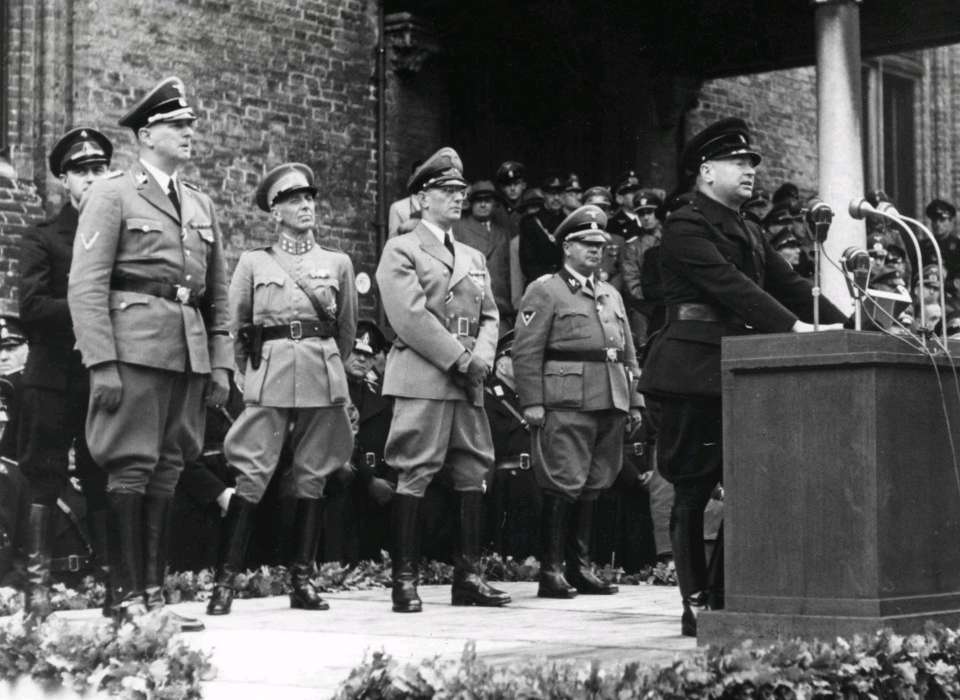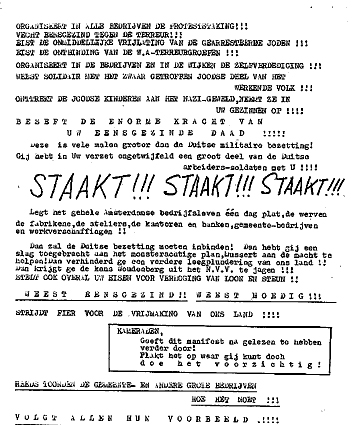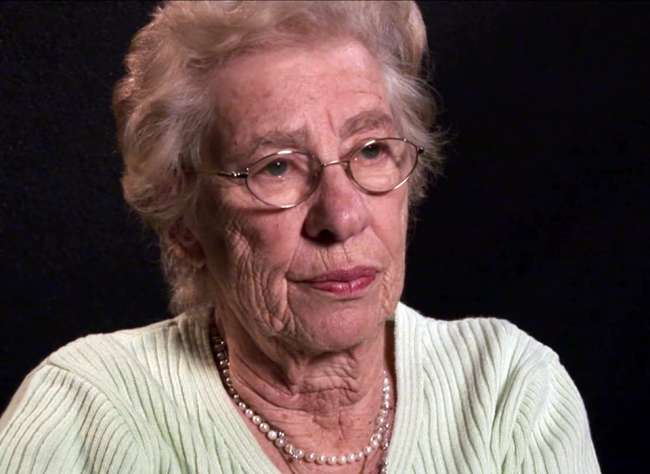Resistance to German occupation has been celebrated—and mythologized—since the end of World War II. The cases of France and Italy, where national myths were created around resistance groups, are well known. Even if many of their stories have been exaggerated and distorted, women, men, and children across Europe did fight back against the Nazis’ so-called New Order.
What resisting meant differed radically depending on time, place, and immediate circumstances. Some deeds were far more perilous than others. In retrospect, resistance involved everything from printing and distributing anti-Nazi leaflets to hiding Jews from the clutches of the SS, to sabotaging the lines of communication or railways the Wehrmacht needed, to taking up arms, individually or with a group, against the Germans or pro-Nazi collaborators.
In the case of Amsterdam’s working class, resistance entailed organizing a general strike. The Amsterdam General Strike of February 1941, what the Dutch termed the Februaristaking, deserves to be known, understood, and remembered.
The Dutch armed forces surrendered on May 14, 1940, the fifth day of the German invasion and the day after Queen Wilhelmina and the government fled The Hague to London. With the Netherlands securely in the hands of the German army, the Nazi regime appointed Arthur Seyss-Inquart as Reich Commissar for the country. His most important subordinate and rival was Hanns Albin Rauter, the General Commissar for Security, a Higher SS and Police Leader dispatched by Heinrich Himmler. These two Austrians, both executed as war criminals after the Third Reich’s defeat, could rely on the National Socialist Movement, an indigenous fascist party led by Anton Mussert, for enthusiastic support.
The 140,000 Jews residing in the Netherlands thus had good reason to be afraid. Among them were 25,000 foreign, mostly German Jews, who had sought refuge there, including Anne Frank and her family. Over the next several months, the expected anti-Semitic measures came. Seyss-Inquart and Rauter passed legislation barring Jews from holding public office. In October, all Dutch civil servants had to complete forms—one specifically designed for Jews, the other for Aryans. At the same time, Jewish businesses were also forced to register with the government. The process of removing Jews from the civil service then ensued in early November. In January 1941, the Nazis demanded registration of all Jews, as well as people of mixed ancestry. This insidious process, gradually and methodically implemented, of identifying and separating Jews from everyone else, relegated them to pariah status in their own country.
Following this wave of reactionary legislation, two incidents in February 1941 demonstrated that the Jewish population in Amsterdam would not hesitate to protect themselves. Feeling emboldened, the Defense Division, the paramilitary arm of Mussert’s organization, openly attacked Jews in Amsterdam. Young Jewish men fought back fiercely and, in one confrontation, killed a Dutch National Socialist. Enraged, German administrators ordered the formation of a Jewish Council, led by Abraham Asscher and David Cohen, to enforce compliance with occupation policy. Then, on February 19, German police entered a popular ice cream parlor in South Amsterdam owned by Erich Cahn, a German Jew and refugee. Mistaken for Dutch Nazis, this patrol was sprayed by ammonium gas from an improvised device in the parlor. In retaliation, the Germans arrested, tortured, and sentenced Cahn to death by firing squad.
Ever mindful to send a message, Seyss-Inquart’s government additionally seized 425 Jews, literally grabbing them from Amsterdam’s streets, and deported them to Buchenwald. Of them, 389 were sent from there to Mauthausen. Only a few survived. The brutality displayed in these roundups not only shocked people but stirred them to act.
Opposition took shape around the radical Left. The Communist Party of the Netherlands (CPN), banned by the German authorities, gave voice and organization to these stirrings. A meeting organized by the Communists and attended by trade-union representatives happened on the 24th. Two CPN militants, Piet Nak and Willem Kraan, called for a general strike. Leaflets were distributed, emblazoned with the words: “Strike! Strike! Strike! Shut down all of Amsterdam for a day!” The Marx-Lenin-Luxemburg Front, founded by Henk Sneevliet, a former ally of Leon Trotsky, also pledged support.
On Tuesday, February 25, tram drivers and sanitation crews started it. Dockworkers quickly joined in. Workers on bicycles rang the doorbells at homes and halted traffic in the streets, imploring drivers to join them. Factories closed. Offices, shops, and restaurants stood empty. At its peak, an estimated 300,000 people took part. An impressive, inspiring display of coordinated action, the strike shut down Amsterdam. It was a moment where solidarity, a core principle of the modern workers’ movement, merged with the old ideal of care for one’s neighbor. Although rumors started that the strike had spread to neighboring towns such as Haarlem, Utrecht, Hilversum, and Zaandam, it remained primarily confined to Amsterdam. Nonetheless, the Germans were caught completely unprepared and feared a large-scale uprising.
For all their success, the strikers faced immediate pressure to end their action from two very different sources. According to historian Jacob Presser, members of the Jewish Council pleaded with the organizers to stop, worried that the SS would carry out more deportations. On the streets, Rauter’s security forces acted savagely. Where rifles did not suffice, hand grenades were used. Nine participants in the strike died in this violence and dozens were injured. The strike ended two days later on February 27. In early March, the occupation authorities prevented a follow-up action and arrested and executed 18 protesters.
The reprisals did not cease with the strike’s end. The Germans sacked the entire city council. Sybren Tulp, who had served in the colonial army in the Dutch East Indies, assumed control of Amsterdam’s police force. He proved a most dependable collaborator after Hitler made the decision for systematic, continent-wide genocide in late 1941. In April 1942, Jews were ordered to wear the Star of David. Three months later, deportations to the extermination camps began, mainly to Auschwitz-Birkenau and Sobibor, where Jews were murdered upon arrival. Most of the deported passed through the notorious transit camp at Westerbork on their way east. By September 1943, Amsterdam, the German authorities boasted, was Judenfrei (free of Jews). Rivalry between Seyss-Inquart and Rauter did not affect the inhuman efficiency of Nazi killing. More than three quarters of the Jewish community who resided in the Netherlands in May 1940 perished during the Holocaust.
Kraan and Sneevliet were caught and put to death by the Germans in 1942, while Nak survived. What they and their comrades dared—to stand with Amsterdam’s Jewish populace in a desperate time—endures. At Yad Vashem, Israel’s official memorial to victims of the Nazi genocide, a tree was planted to honor the strikers. And each year, on February 25, Amsterdam commemorates its historic moment of solidarity and defiance. Fittingly, marchers gather at the Jonas Daniël Meijer Square, near a statue built by Mari Andriessen of a dockworker with his hands forming into fists.
The February 1941 General Strike was an extremely rare instance where non-Jews collectively risked life and limb for their Jewish neighbors and fellow citizens. To be sure, Amsterdam’s working class did not stop Nazi plans for expulsion and mass murder. It took the American, British, and Soviet armed forces, with everything they could muster, to do that. Yet the strike showed what a vigorous anti-fascism could accomplish, even against an enemy without scruples or mercy.
Jason Dawsey, PhD
Jason Dawsey, PhD, is ASU WWII Studies Consultant in the Jenny Craig Institute for the Study of War and Democracy.
Cite this article:
MLA Citation:
APA Citation:
Chicago Style Citation:








![Max Fuchs, New York City cantor, sings as Rabbi Sydney [sic] Lefkowitz, Richmond, VA, conducts the first Jewish services from Germany.](/sites/default/files/styles/max_650x650/public/2025-10/image1.jpg)


